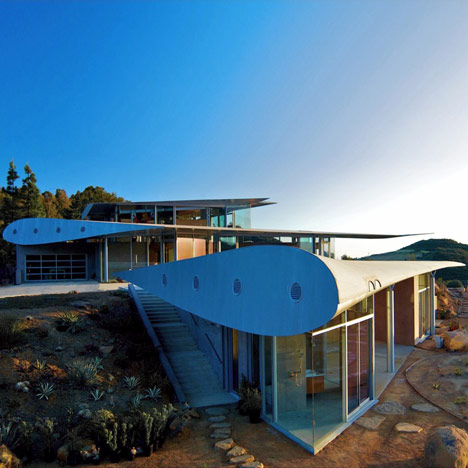
747 Wing House by Studio of Environmental Architecture
The roof of this Malibu house is made from the wings of an aeroplane.
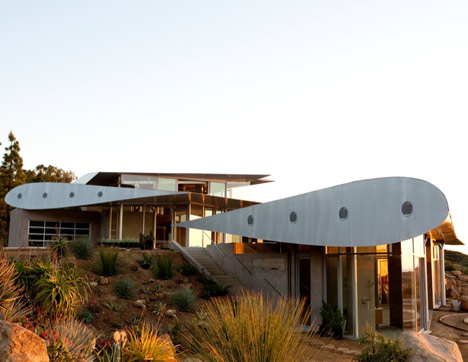
The suspended wings rest over self-supporting glass walls that front the hillside house, which was designed by American architects Studio of Environmental Architecture.
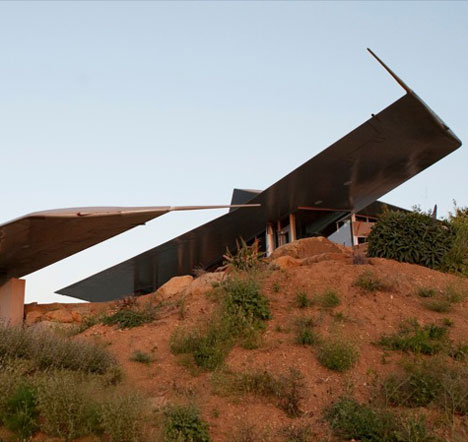
Parts of the aeroplane tail shelter the master bedroom, while the fuselage covers a guesthouse, barn and artist’s studio that are each housed in separate buildings.
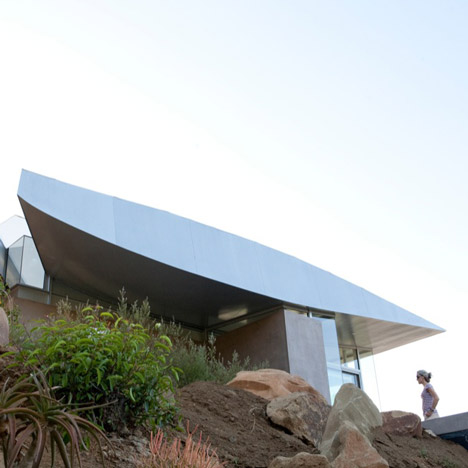
The cockpit of the plane creates a roof with a large skylight to a meditation pavilion, located towards the edge of the site.
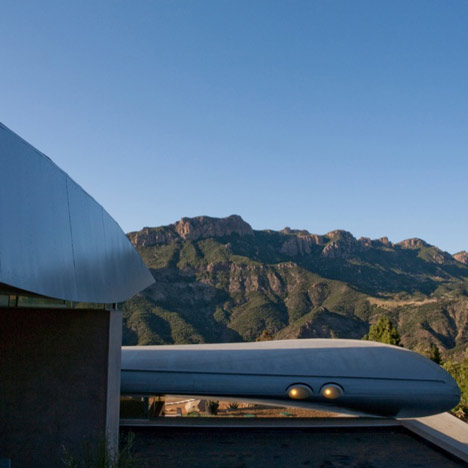
At the rear of the house, concrete and rammed earth walls nestle into the hilly landscape.
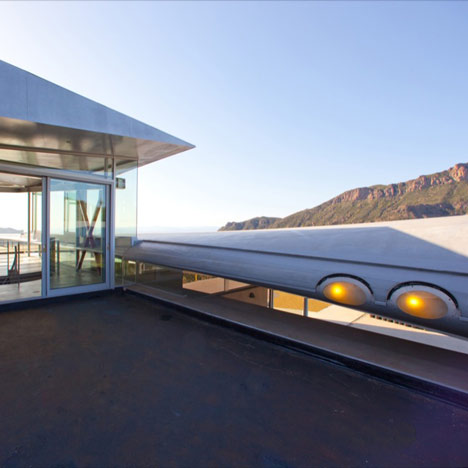
The architects had to register the house with the Federal Aviation Authority so that pilots would not mistake it for a crashed jet.
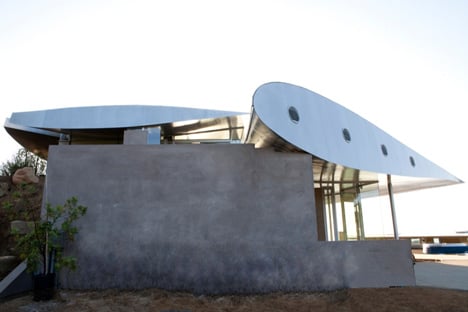
Other American houses recently featured on Dezeen include one with a twisted cantilever and another beneath the famous Hollywood sign - see all our stories about projects in the USA.
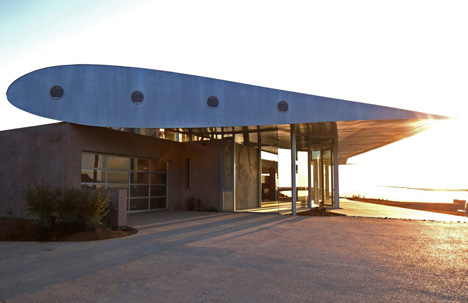
Photography is by David Hertz, Carson Leh & Laura Doss.
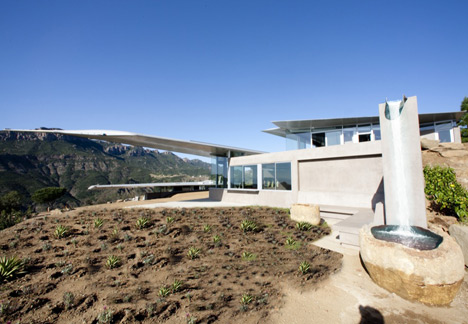
Here's a description from the architects:
This project exists on a 55-acre property in the remote hills of Malibu with unique topography and panoramic views looking out to a nearby mountain range, a valley, and the Pacific Ocean with islands in the distance. The site was previously owned and developed by the eccentric designer Tony Duquette who developed over 21 unique structures incorporating found objects from all over the world. In 1995, the Malibu fire destroyed all but a few steel “Pagoda”-like structures. When I first visited the site I was struck by the fantastic views but also the creativity by which Duquette appropriated found objects and made them look as if they were originally crafted like traditional indigenous structures.
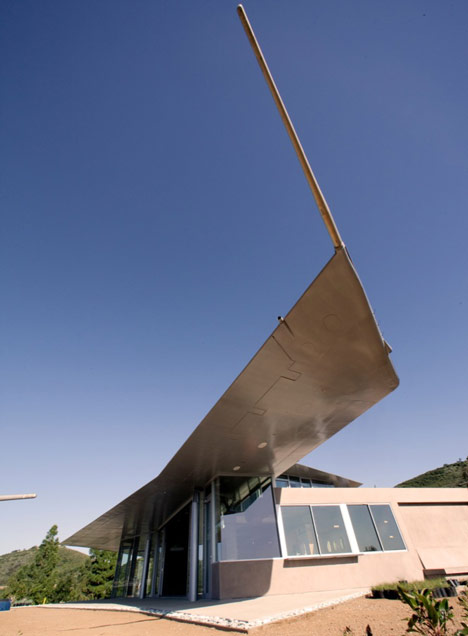
In searching for inspiration, I imagined a roof structure that would allow for a un-obstructed view of the mountain range and distant views. The client, a woman who co-owns a Mercedes car dealership, requested curvilinear/feminine shapes for the building. The progenitor of the building’s form was envisioned as a floating curved roof. It soon became apparent, that in fact, an airplane wing itself could work. In researching airplane wings and superimposing different airplane wing types on the site to scale, the wing of a 747, at over 2,500 sq. ft., became an ideal configuration to maximize the views and provide a self supporting roof with minimal additional structural support needed.
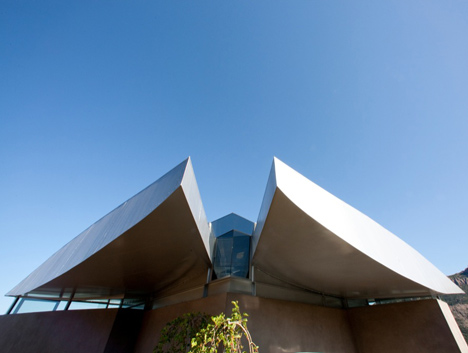
By incorporating many of the previous pads and retaining walls we sought to minimize significant grading and subsequent impacts to the existing topography and landscape. The wing structures are conceived to be positioned to float on top of simple concrete, shot-crete, and rammed-earth walls that are cut into the hillsides. The floating roofs will derive simple support from steel brace frames, which will attach to strategic mounting points on the wing where the engines were previously mounted. Frameless, structural self-supporting glass will create the enclosure from the concrete slab on grade into the wing as roof.
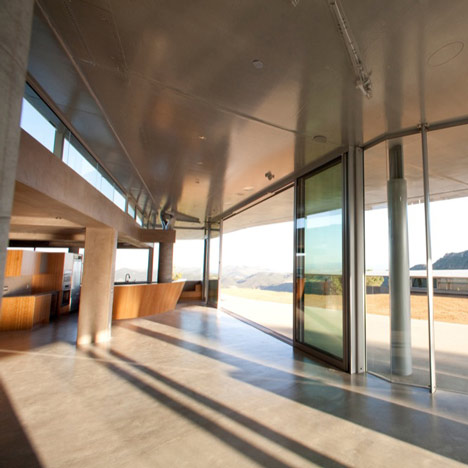
The scale of a 747 aircraft is enormous - over 230 feet long, 195 feet wide and 63 feet tall with over 17,000 cubic feet of cargo area alone and represents a tremendous amount of material for a very economical price of less than $50,000 dollars.
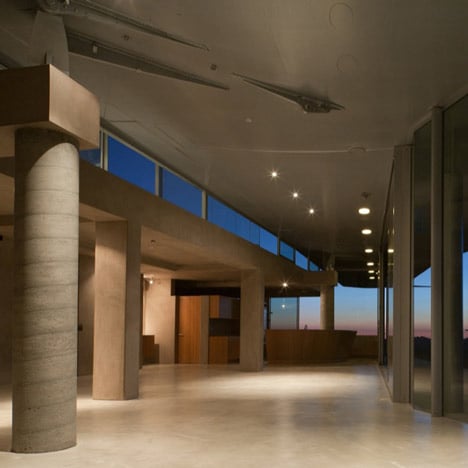
In researching aircrafts we began to realize that there are hundreds of airplanes that have been retired to sit in the deserts of California and are sold at the price of their principal raw material, aluminum. The idea of utilizing recycled components and appropriating them in creative new ways was certainly consistent with the existing context of the Duquette structures. Additionally, incorporating prefabricated lightweight components off site and delivering them to the remote site via helicopter, although at a cost of $8,000/hr. became realistic after considering the cost of getting traditional labor and material to the site.
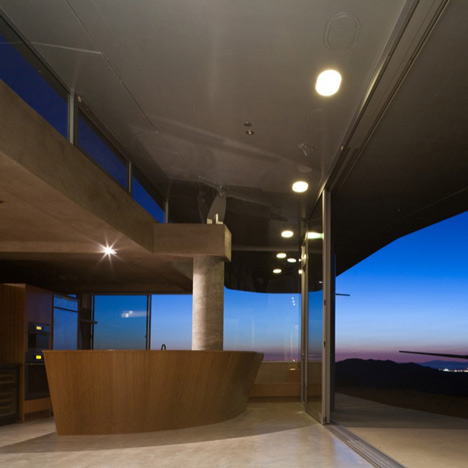
After visiting the planes and verifying with the building department that there is nothing specifically prohibiting the use of an airplane wing as a roof, we began to explore the actual structure of the wings in particular and examined if other components might be used for additional accessory structures on the property. Although, we did find out that we have to register the roof of the house with the FAA (Federal Aviation Administration) so pilots flying overhead do not mistake it as a downed aircraft.
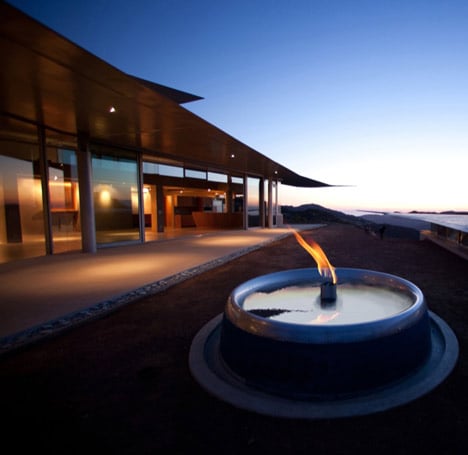
As we analyzed the cost, it seemed to make more sense to acquire an entire airplane and to use as many of the components as possible, like the Native American Indians used every part of the buffalo. Therefore, the property is to consist of several structures all made with components and pieces of a Boeing 747-200 aircraft.
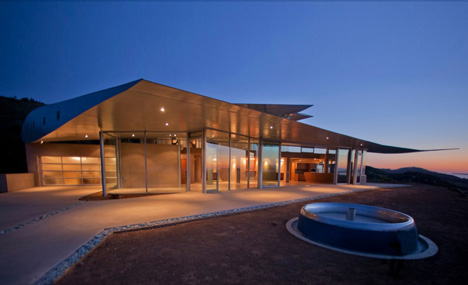
The Main Residence will use both of the main wings as well as the 2 stabilizers from the tail section as a roof for the Master Bedroom. The Art Studio Building will use a 50-foot long section of the upper fuselage as a roof, while the remaining front portion of the fuselage and upper first class cabin deck will be used as the roof of the Guest House. The lower half of the fuselage, which forms the cargo hold, will form the roof of the Animal Barn. A Meditation Pavilion will be made from the entire front of the airplane at 28 feet in diameter and 45 feet tall; the cockpit windows will form a skylight. Several other components are contemplated for use in a sublime manner, which include a fire pit and water element constructed out of the engine cowling.
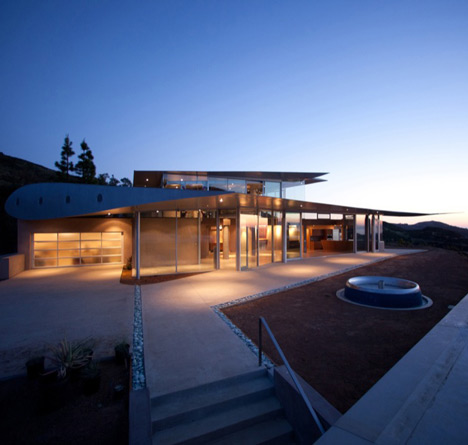
The 747 represented the single largest industrial achievement in modern history and its abandonment in the deserts make a statement about the obsolescence and ephemeral nature of our technology and our society. As a structure and engineering achievement, the aircraft encloses a lot of space using the least amount of materials in a very resourceful and efficient manner. The recycling of the 4.5 million parts of this “big aluminum can” is seen as an extreme example of sustainable reuse and appropriation. American consumers and industry throw away enough aluminum in a year to rebuild our entire airplane commercial fleet every three months.
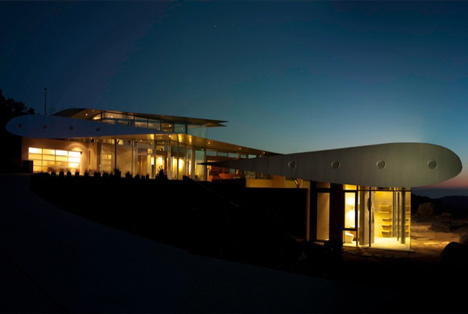
Wing house, as a work in progress, has many plans for the implementation of environmental features. The sole fact that an entire 747 is being used to construct a main residence and 6 ancillary structures, is environmentally sustainable in that the material being used is 100% post-consumer waste, and the plane has already been engineered so that additional material and man power are not necessary as they would be if the structure was to be built from the ground up. Solar power, radiant heating and natural ventilation will be incorporated as well as high performance heat mirror glazing.